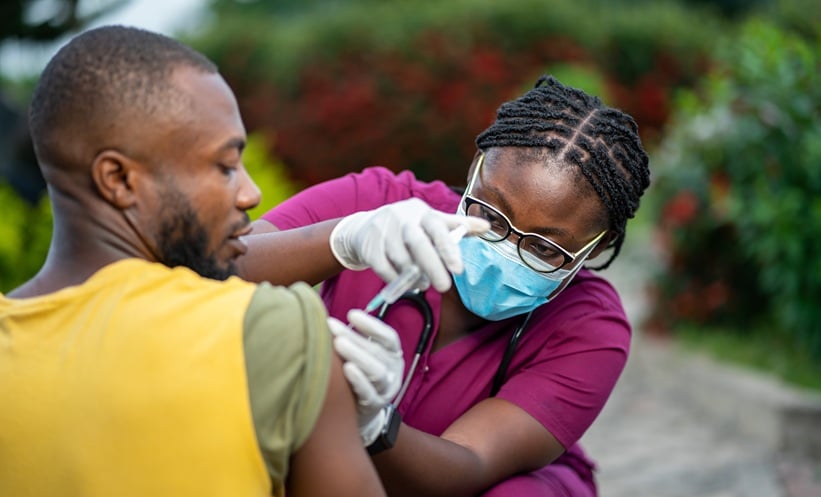Author: Aleksandra Zurowska, EMJ, London, UK
Citation: EMJ Microbiol Infect Dis. 2025;6[1]:23-25. https://doi.org/10.33590/emjmicrobiolinfectdis/ZRDW7920
![]()
THE GLOBAL LANDSCAPE AND CHALLENGE OF IMPLEMENTATION
With billions of instances of antimicrobial use globally, effective implementation is one of the biggest challenges faced by the community. Many efforts are going into surveillance, but far less into actual programme implementation. Despite global and national action plans, there is a lack of sufficient support for the small, but crucial workforce that are the antimicrobial stewards, which poses a key struggle in many countries.
Furthermore, antimicrobial use extends far beyond human health. Antibiotic usage is vast in agriculture and the community, yet most evidence informing stewardship comes from hospitals, often in high-income countries. This leads to a bias in the evidence base.
Evidence Gaps and Structural Challenges
Thursky’s team were recently invited to conduct a global overview of AMS, where the team looked at structural, process, and outcome measures. The findings showed that most evidence sits in the hospital sector. Whilst strategies including policy guidelines, audit and feedback, and cost monitoring are well studied, major gaps remain in the community and animal health sectors, along with structural and process measures.
Reframing Antimicrobial Stewardship
Thursky emphasised that the key message from the talk was to answer the question: ‘Do we need to reframe antimicrobial stewardship?’
AMS is often framed purely in the context of antimicrobial resistance (AMR). Thursky noted that many studies still cite the O’Neill report predicting up to 10 million AMR-related deaths by 2050.¹ However, she argued that this framing may not be the most effective way to drive behaviour change in clinical practice. Drawing on insights from the Wellcome Trust, she highlighted that terms like ‘AMR’, ‘superbugs’, and ‘the war on superbugs’ often fail to resonate with prescribers and patients. These concepts can feel abstract or disconnected from day-to-day decision-making. Instead, Thursky advocated for a shift in language, towards messaging that is rooted in patient safety, clinical relevance, and appropriate medicine use.
Moral Injury and the Complexity of Prescribing
In a collaborative project with Mark Davies, a social scientist at Monash University in Melbourne, Australia, Thursky’s team explored the social dynamics of antibiotic prescribing in a One Health context. One concept that emerged was moral injury, for example, a paediatrician treating a visibly ill child with antibiotics despite suspecting a viral illness, out of fear of missing a serious infection.
Thursky stressed that moral tension for clinicians is real, as they want to do what is safest for their patients and animals, even if it conflicts with stewardship principles. Thursky stressed that clinicians need support in this type of decision-making.
Reframing Stewardship Within Quality Use of Medicines
Thursky advocated for viewing AMS as part of the broader quality use of medicines, rather than limiting it to infection control or AMR. She pointed to Canada, where AMS is formally embedded in the national quality use of medicine framework with other stewardship programmes, like those for anticoagulation or opioids, which focus on safety, appropriate prescribing, and multidisciplinary care.
Thursky also noted that AMS and sepsis programmes are sometimes seen as conflicting, but should instead be aligned as part of a shared goal to improve medication safety and patient outcomes.
ADVANCING STEWARDSHIP: DATA, DESIGN, AND INNOVATION
Moving to efforts of advancing AMS, Tursky stated that: “Firstly, change needs to happen in the way we operate.” She highlighted the ‘learning health system’, a system that integrates research, real-time data, behavioural science, and cultural change into programme design, as a helpful approach. This dynamic continuous improvement model can alleviate waiting years for clinical trial results to affect clinical practice. Thursky’s team uses this framework in their One Health Services Research Group at the National Centre for Antimicrobial Stewardship in Melbourne, Australia.
A core message discussed was the importance of building stewardship programmes around meaningful data, particularly understanding how, where, and why antimicrobials are used. Indication, Thursky noted, is the most critical factor in designing effective interventions, as recognised in the UK’s AMR strategy.
“In order to move from data to action, we need skilled contributors: data analysts, informaticians, human factors experts, and, crucially, patient and consumer voices,” emphasised Thursky, as these resources are often scarce, especially in low- resource settings, where prescribing data is fragmented across paper records and inconsistent systems.
Australia has addressed some of these challenges through initiatives like the National Antimicrobial Prescribing Survey (NAPS), a nationwide, web-based audit platform that offers real-time dashboards, benchmarking, and modules tailored to settings such as surgical prophylaxis, aged care, and fungal infections. NAPS has helped embed the concept of appropriateness into national standards and is now being adopted internationally.
In more complex settings like oncology and haematology, Thursky’s team used a co-design process to develop specialised antifungal stewardship tools. Notably, pharmacists outperformed physicians in assessing appropriateness, reinforcing the important role they play in AMS.
Recognising that few teams have access to implementation scientists, Thursky encouraged the use of design thinking, a practical, user-centred approach to programme design that starts with understanding real-world challenges and co-developing solutions with those affected.
THE FUTURE: AI
Looking ahead, Thursky acknowledged the growing role of AI in healthcare and stewardship. While AI tools, from large language models to diagnostic algorithms, hold promise, she stressed that they must be carefully integrated into clinical workflows and not treated as standalone solutions.
The current role of AI models in AMS lies in its applications to augment and improve systems, as well as alleviate labour intensive or computationally challenging tasks.
Additionally, machine learning can support AMS through antibiotic selection and optimisation, prediction of AMR, early diagnosis and risk stratification, and clinical decision support systems. However, there are concerns about bias and data limitations, which will need to be addressed in order to fully employ machine learning algorithms into AMS.
CONCLUSION
Thursky concluded the session with a short recap on the topics discussed, underlining that advancing AMS will come through combining clinical insight with better data, broader collaboration, and thoughtful design, so that AMS can adapt to evolving health systems and global challenges.







